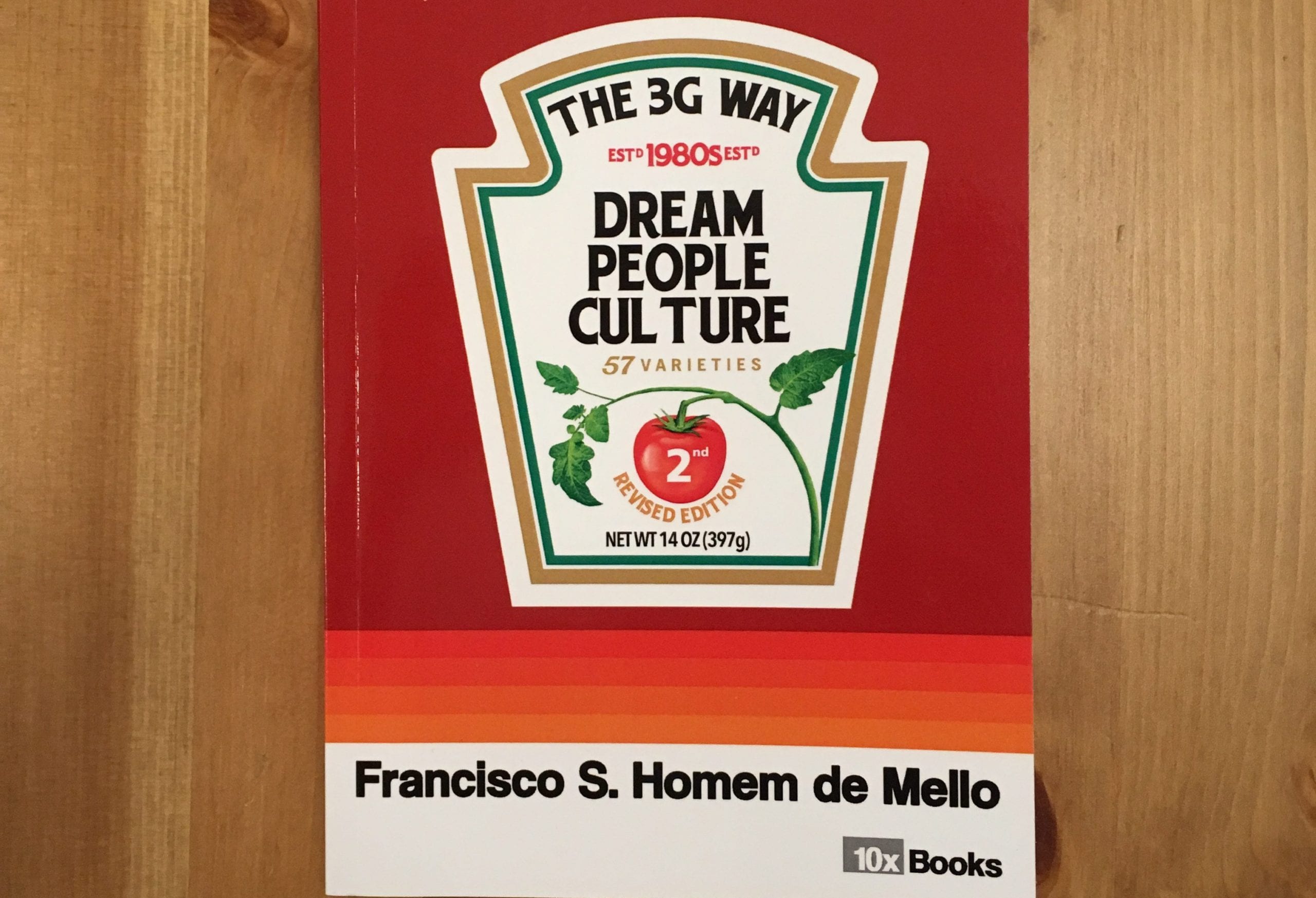
Book Review: The 3G Way
Yash recommended this book to me a year ago, but I read it on my break last week. I finished it in one sitting.
What is common between
- Anheuser-Busch InBev, the world’s largest brewer with brands like Corona, Budweiser, Stella, Leffe, etc.
- Restaurants Brands International, the 7th largest fast-food chain in the world with brands like Burger King, Tim Hortons, and Popeyes
- The Kraft Heinz Company, the 5th largest food and beverage company in the world
???
3 guys from Brazil own all 3 companies – directly or indirectly. They are the co-founders of private equity firm 3G Capital, i.e., Jorge Paulo Lemman, Marcel Hermann Telles, and Carlos Alberto Sicupira – the 2nd, 4th, and 5th wealthiest Brazilians!
Why these 3 investment bankers own, arguably, the most envied FMCG portfolio in the world is the focus of The 3g Way: An Introduction to the Management Style of the Trio That’s Taken Over Some of the Most Important Icons of American Capitalism. Francisco Souza Homem de Mello authored the book.
Francisco goes into minute details around the trio’s management system based on Dream, People, and Culture. Their strategy gives them the ability to turnaround great companies bogged down by bad management and poor culture. What is most commendable about the 3G culture is how it churns out reliable leaders that live and breathe the same system. The system’s stupendous success got them the opportunity to partner up with their idol; the Oracle of Omaha, Warren Buffet, in the Kraft Heinz transaction!
The chapters on Meritocracy, Growth, the Talent Factory, From Dreams to Goals, Gaps and Methods, Ownership mindset, and Costs and Budgets left a lasting impact.
What I love about this book are the charts, formulas, and diagrams that I could utilize in resolving issues that I face at Artha or in our portfolio companies. The simplicity of 3G’s management style based on simplicity and transparency provides a strong pull for me.
Not just me; any founder could easily see instant results by following the guidelines provided in this book – I strongly recommend this book to all founders!
Here is a list of my highlights from the book:
- They’ve followed Warren Buffet’s famous tenet: “I try to buy stocks in businesses that are so wonderful that an idiot can run them. Because sooner or later, one will.”
- We’re a one-trick-pony: our trick is to leverage people. That’s what we know how to do. Find people that have talent, a spark in their eyes, and a desire to grow, and open up their path, to help them get ahead. – Marcel Telles
- In order to have great people, a company has to invest in several fronts:
- Foster an environment where great people feel great.
- Create a constant pipeline for great people to enter and climb the company’s ranks.
- Compensate great people dis-proportionately.
- Get rid of the poorest performers, so that the average talent pool improves constantly.
- According to Brito, great people like working for companies that have three key traits:
- Meritocracy: the best are recognized and the worst are driven out of the system.
- Informality: hierarchy is not imposed, but earned, and where they can express their opinions openly without peer pressure and political concerns.
- Candor: there are no hidden agendas. Fact-based discussions and a clear notion of where people stand in the company is the rule and not the exception.
- It is very important that the company has a constant pipeline of talent in all its ranks.
- Leaders are all required to have at least two team members identified as potential successors, from which at least one must be ready to take on the position within the next six months.
- Dealing with poor performance, for example, takes manager discipline to face the facts, confront the employee, and fire him or her after three feedback sessions have not brought about the intended performance improvement.
- Letting employees know how their performance relates to their colleagues’ achievements fosters healthy competition.
- Bosses should not use their position or their clothing to impose respect; they should earn their team’s respect through example, performance, and argument.
- According to Brito, a candid environment is one where “everyone in the company can speak up as long as they are respectful and constructive,” and where “people know where they stand” in terms of their performance and the company’s plans for them
- According to Vicente Falconi, encouraging employees to speak up brings them great enthusiasm, since they’re able to persuade colleagues and take an active part in the direction taken by the company.
- Leaders must always provide reports with open, candid feedback that allows them to improve their weaknesses and enhance their strengths.
- Great people like to know if the company has great plans for them
- But the fact is that growth and talent must walk hand-in-hand, or everything falls apart.
- The company only grows when its people grow.
- From the “big dream,” which is the company’s long-term business goal, achievable in three to five years, the company breaks down its yearly plan, and then the goals and tasks of every employee, from the CEO to the plants’ janitorial staff.
- When people stay at the first layer of a problem (the first “why”) they tend to overlook the real root cause. Therefore, the tool is to ask Why five subsequent times (or as many times as needed) until the final root cause of a problem is found.
- The root cause often makes an action plan to solve the problem obvious.
- 80% of an employee’s goal/gap (or the company’s, for that matter) has to be achievable with the skills presently owned by him. The other 20% are the stretch that makes the employee go the extra mile
- Everything, throughout the company, has to have an owner: someone clearly responsible for the outcomes of a process, decision, or project.
- Owners produce more and better work.
- First, owners are committed to businesses for the long term, and therefore think long term.
- The trio views a hands-on attitude as a fundamental attribute of great people.
- A big trait of the trio’s 3G management style is adopting the world’s best practices, when available, and then improving upon them, instead of trying to reinvent the wheel at great cost of time and money.
- The practice of shaving costs and expenses and out-spending competitors in activities like product R&D, marketing, and branding, was inspired by a little-known book that has been repeatedly distributed by the trio amongst their executives over the years: Double Your Profits: In Six Months or Less, by Bob Fifer.
- Great companies underspend their competitors on non-strategic costs, and overspend them on strategic ones.
- Leaders are those who “need a team in order to reach goals.”
- A leader’s role is to recruit people that are better than him- or herself, and then train, challenge, and retain them.
- Strategic costs are those that “clearly bring in business and improve the bottom line.”
- Great businesses have to ruthlessly cut non-strategic costs, and even underspend their competition, while overspending in strategic costs.
- Great people grow at the pace of their talent and are rewarded accordingly.
- We will be judged by the quality of our teams.
- We are a company of owners. Owners take results personally.





